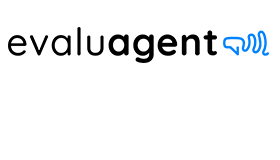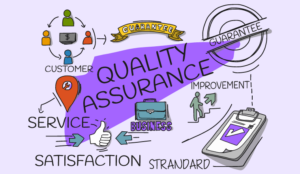Often, contact centres should have a long-term goal to implement Quality Assurance or at least to create a more structured process than what they currently have. It may be that they don’t have anything in place at all, or are using spreadsheets to try to keep costs down.
More often than not, they know they need to do more with Quality Assurance but are struggling to find the resource and time to carry it out effectively, or simply don’t know where to look for help.
The reasons we see organizations wanting to take immediate measures to improve Quality Assurance are usually related to cost control or efficiency gains or limited resource to manage QA beyond current capability.
But the reality behind most of our projects stalling is the daunting notion of managing the whole process and then the worry of not being able to see tangible benefits once you have rolled out a new QA program or committed to a tool.
And we totally understand that, but…
The reality is that doing nothing about Quality is an even bigger concern. It can cost your business far more in the long run, and the challenges you face in the contact centre today will only become greater if you do nothing.
Kicking the can down the road is the least favorable outcome of a project related to improving Quality Assurance in your contact centre.
Companies that don’t invest in Quality Assurance are taking a huge risk, and a decision that will more than likely result in the outcomes below:
- Lack of visibility into the performance of your product, people and services
- Inconsistent training and coaching
- A decline in agent engagement
- Risk of repeat failures and performance issues
- Poor customer experiences
- Loss of revenue
How Can QA Resolve These Common Challenges Contact Centres Face?
Simply, It Will Enhance the Quality of Your Service, Delight Customers and Strengthen Loyalty.
A comprehensive quality assurance program plays a major role in consistently delivering great customer experiences. Evaluations do not only have an impact on assessing agent performance, but they are also mutually beneficial to understanding a customer’s perception of service and their frustrations.
If you haven’t defined criteria to measure quality against, how do you know you’re providing a good level of service?
A study from Zendesk reports that the majority of people stated that one poor experience alone is enough to stop them returning to a business.
In today’s climate, it can be detrimental to any organization not to have insight into the reasons for customer dissatisfaction and to take steps to overcome the hurdles that cause this.
Once you have monitored and evaluated your customer interactions, a good QA tool makes it easier to collate, report, share and give feedback on those interactions in real-time, which is something a spreadsheet cannot do.
Improving your QA processes has a positive influence on driving key metrics such a CSAT, NPS, and FCR to ensure you are retaining customers as well as acquiring them.
Improve Agent Performance, Reduce Attrition
When agents are happy and engaged within their role, this is reflected in the service they provide. The primary purpose of carrying out QA is to ensure agents are performing to the desired level of service set out by an organization so they can consistently deliver great customer experiences.
Without proper QA processes, it can be difficult to spot knowledge gaps, understand the level of demand on the contact centre and provide support to those agents that need it.
A troubling statistic from NICE shows 58% of agents say they get very little out of the coaching that their contact centre offers, and 49% say a clear growth path has a high impact on whether they stay at an organization or not.
Agents need to have a voice within QA and have access to feedback, coaching and their own performance to be engaged within their role. Having a centralized platform that incorporates the above allows the agent to take ownership of performance and gives them the guidance they need to succeed and develop.
Good QA software comes with coaching and development tools to drive and manage consistent training. This can also be combined with self-learning through integrated eLearning platforms, and gamification is a great way for agents to become engaged and enjoy learning.
Increase Efficiency and Productivity, Not the Size of Your Team
No one has time to spend hours sifting through spreadsheets to locate previous evaluations, actions and feedback. It’s a massive waste of time that could be spent engaging and coaching your agents.
Good QA software presents the conversation and scorecard in one view, making it much easier to carry out an evaluation. Even more useful is having access to all previous coaching conversations, actions, quality scores and feedback in one centralized platform.
Being able to reduce the FTE hours QA takes with efficient processes results in less time needed to carry out QA, which can help bring resource into other areas and has huge cost savings.
The Share Centre demonstrated a 285% increase in productivity switching from manual processes to EvaluAgent’s QA software and were able to deliver 5x more feedback without increasing their number of employees.
Automating repetitive tasks such as assigning evaluations to QA analysts automatically is a huge advantage of QA software, and being able to assign actions, e-learning lessons, and 1-1s and to give real-time feedback directly from one platform enables everything to run seamlessly and addresses root problems quickly and effectively.
QA Software Has a Proven ROI: Stop Losing Customers, Agents and Valuable Time Because You’re Scared to Support QA Costs
ROI is crucial when implementing any new QA software, and so it should be. If your contact centre faces any of the challenges mentioned above, then it’s time to look at investing in QA software as a solution to attracting customers, increasing retention, reducing attrition, improving your people and processes and using Quality Assurance to improve your metrics whilst lowering costs.
This blog post has been re-published by kind permission of EvaluAgent – View the Original Article
For more information about EvaluAgent - visit the EvaluAgent Website
Call Centre Helper is not responsible for the content of these guest blog posts. The opinions expressed in this article are those of the author, and do not necessarily reflect those of Call Centre Helper.
Author: EvaluAgent
Published On: 14th Oct 2022 - Last modified: 18th Oct 2022
Read more about - Guest Blogs, EvaluAgent






 EvaluAgent provide software and services that help contact centres engage and motivate their staff to deliver great customer experiences.
EvaluAgent provide software and services that help contact centres engage and motivate their staff to deliver great customer experiences. 








